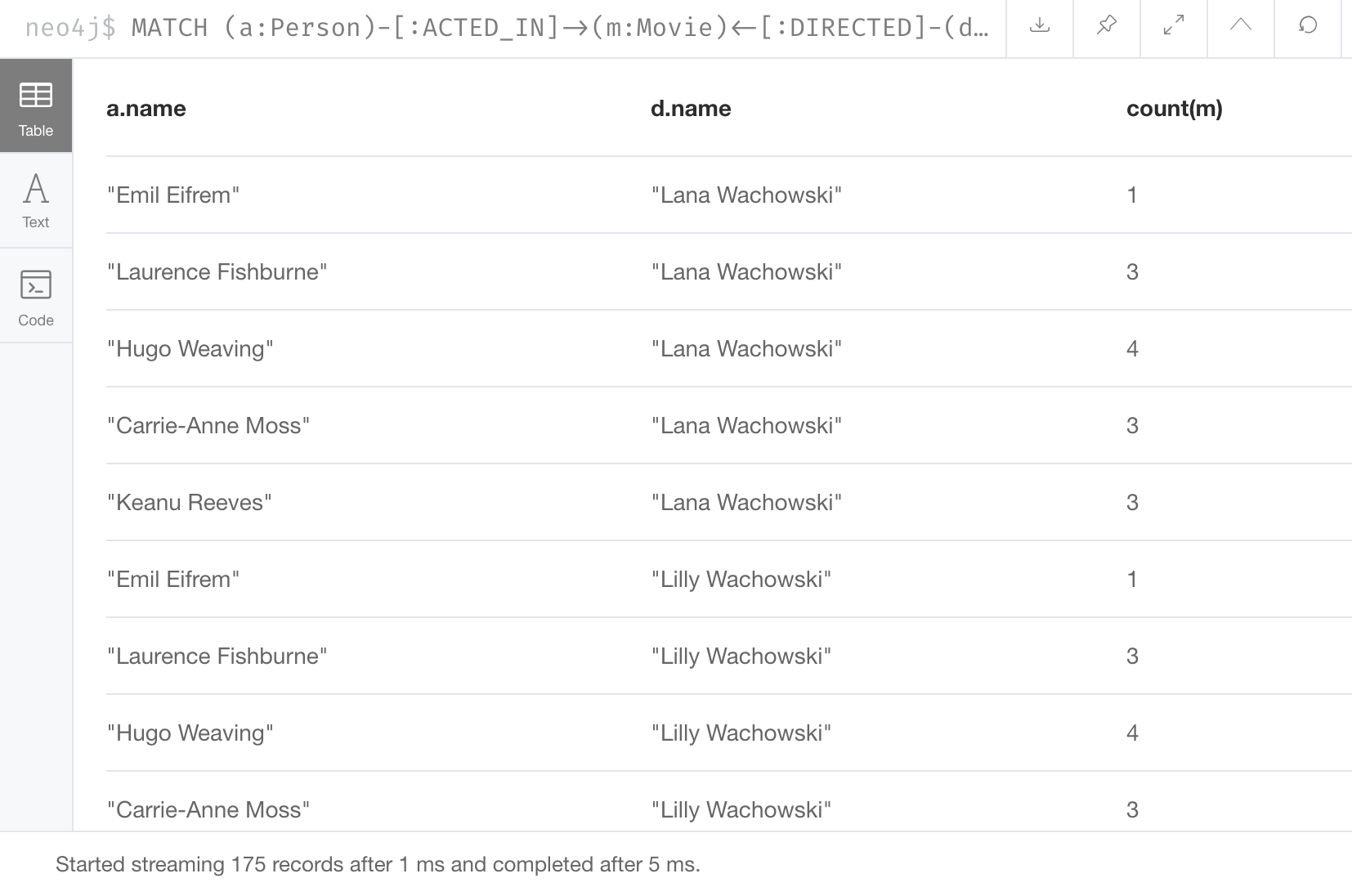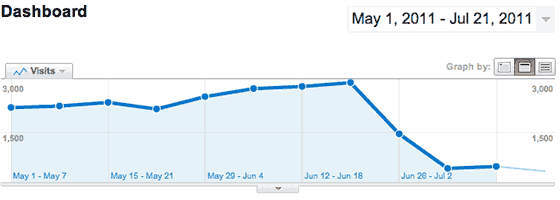The GROUP BY clause is often used in SQL statements which retrieve numerical data. It is commonly used with SQL functions like COUNT, SUM, AVG, MAX and MIN and is used mainly to aggregate data. Data aggregation allows values from multiple rows to be grouped together to form a single row.
The first table shows the marks scored by two students in a number of different subjects. The second table shows the average marks of each student. Expression_n Expressions that are not encapsulated within an aggregate function and must be included in the GROUP BY Clause at the end of the SQL statement.
Aggregate_function This is an aggregate function such as the SUM, COUNT, MIN, MAX, or AVG functions. Aggregate_expression This is the column or expression that the aggregate_function will be used on. Tables The tables that you wish to retrieve records from. There must be at least one table listed in the FROM clause.
These are conditions that must be met for the records to be selected. The expression used to sort the records in the result set. If more than one expression is provided, the values should be comma separated. ASC sorts the result set in ascending order by expression.
This is the default behavior, if no modifier is provider. DESC sorts the result set in descending order by expression. The Group by clause is often used to arrange identical duplicate data into groups with a select statement to group the result-set by one or more columns.
This clause works with the select specific list of items, and we can use HAVING, and ORDER BY clauses. Group by clause always works with an aggregate function like MAX, MIN, SUM, AVG, COUNT. The MIN and MAX functions are used to find the minimum and maximum values of fields. When used together with the GROUP BY clause, the MIN and MAX functions will compute the minimum and maximum values for the fields selected for aggregation. FILTER is a modifier used on an aggregate function to limit the values used in an aggregation.
All the columns in the select statement that aren't aggregated should be specified in a GROUP BY clause in the query. ROLLUP is an extension of the GROUP BY clause that creates a group for each of the column expressions. Additionally, it "rolls up" those results in subtotals followed by a grand total.
Under the hood, the ROLLUP function moves from right to left decreasing the number of column expressions that it creates groups and aggregations on. Since the column order affects the ROLLUP output, it can also affect the number of rows returned in the result set. The GROUP BY clause is a SQL command that is used to group rows that have the same values. Optionally it is used in conjunction with aggregate functions to produce summary reports from the database.
The SUM() function returns the total value of all non-null values in a specified column. Since this is a mathematical process, it cannot be used on string values such as the CHAR, VARCHAR, and NVARCHAR data types. When used with a GROUP BY clause, the SUM() function will return the total for each category in the specified table. In the sample below, we will return a list of the "CountryRegionName" column and the "StateProvinceName" from the "Sales.vSalesPerson" view in the AdventureWorks2014 sample database.
In the first SELECT statement, we will not do a GROUP BY, but instead, we will simply use the ORDER BY clause to make our results more readable sorted as either ASC or DESC. In this lesson, we will learn uses of the GROUP BY clause in SQL. GROUP BY is often used together with SQL aggregate functions like COUNT, SUM, AVG, MAX and MIN that act on numeric data. Together with these functions, the GROUP BY clause enhances the power of SQL and facilitates the creation of reports with summary data. In this lesson you learned to use the SQL GROUP BY and aggregate functions to increase the power expressivity of the SQL SELECT statement. You know about the collapse issue, and understand you cannot reference individual records once the GROUP BY clause is used.
Contrary to what most books and classes teach you, there are actually 9 aggregate functions, all of which can be used with a GROUP BY clause in your code. As we have seen in the samples above, you can have a GROUP BY clause without an aggregate function as well. As we demonstrated earlier in this article, the GROUP BY clause can group string values also, so it doesn't always have to be a numeric or date value. Adding a HAVING clause after your GROUP BY clause requires that you include any special conditions in both clauses. If the SELECT statement contains an expression, then it follows suit that the GROUP BY and HAVING clauses must contain matching expressions.
It is similar in nature to the "GROUP BY with an EXCEPTION" sample from above. In the next sample code block, we are now referencing the "Sales.SalesOrderHeader" table to return the total from the "TotalDue" column, but only for a particular year. IIt is important to note that using a GROUP BY clause is ineffective if there are no duplicates in the column you are grouping by. A better example would be to group by the "Title" column of that table. The SELECT clause below will return the six unique title types as well as a count of how many times each one is found in the table within the "Title" column. The GROUP BY clause arranges rows into groups and an aggregate function returns the summary (count, min, max, average, sum, etc.,) for each group.
Though it's not required by SQL, it is advisable to include all non-aggregated columns from your SELECT clause in your GROUP BY clause. Like most things in SQL/T-SQL, you can always pull your data from multiple tables. Performing this task while including a GROUP BY clause is no different than any other SELECT statement with a GROUP BY clause. The fact that you're pulling the data from two or more tables has no bearing on how this works. In the sample below, we will be working in the AdventureWorks2014 once again as we join the "Person.Address" table with the "Person.BusinessEntityAddress" table. I have also restricted the sample code to return only the top 10 results for clarity sake in the result set.
Another extension, or sub-clause, of the GROUP BY clause is the CUBE. The CUBE generates multiple grouping sets on your specified columns and aggregates them. In short, it creates unique groups for all possible combinations of the columns you specify.
For example, if you use GROUP BY CUBE on of your table, SQL returns groups for all unique values , , and . The SELECT statement used in the GROUP BY clause can only be used contain column names, aggregate functions, constants and expressions. The GROUP BY statement is often used with aggregate functions (COUNT(),MAX(),MIN(), SUM(),AVG()) to group the result-set by one or more columns.
GROUP BY enables you to use aggregate functions on groups of data returned from a query. For example, the following simple SQL statement sums the values of the DailyAllowance field for all records in the Survey table. Here, the GROUP BY clause is not needed as this SQL statement does not select any other field except the value returned by the SUM function.
The MIN() function returns the smallest value in the column specified. Now, let's use the COUNT() aggregate in the following query. Using the "Sales.vSalesPerson" view in the AdventureWorks2014 sample database, we will count how many times each country or region appears in that view. An aggregate function performs a calculation on a group and returns a unique value per group. For example, COUNT() returns the number of rows in each group. Other commonly used aggregate functions are SUM(), AVG() , MIN() , MAX() .
This is because the where statement is evaluated before any aggregations take place. The alternate having is placed after the group by and allows you to filter the returned data by an aggregated column. We can use HAVING clause to place conditions to decide which group will be the part of final result-set. Also we can not use the aggregate functions like SUM(), COUNT() etc. with WHERE clause. So we have to use HAVING clause if we want to use any of these functions in the conditions.
This is a modified version of the original statement without the GROUP BY clause. Here, values of the Sex and FavoriteFood fields from all rows of the Survey table, with many repetitions, will be listed. In this lesson, you combine all the concepts or clauses you have learned into a single query. You use a WHERE clause to filter records and a GROUP BY to group records in the same SELECT statement. If you want to review the WHERE clause, jump back to the lesson Using The SQL WHERE Clause With Comparison Operators .
A best practice would be to create a view from the above SELECT statement to save time and provide a more efficient way of grouping on the table that have these deprecated data types. As you can see in the result set above, the query has returned all groups with unique values of , , and . The NULL NULL result set on line 11 represents the total rollup of all the cubed roll up values, much like it did in the GROUP BY ROLLUP section from above.
With the character data types CHAR(), VARCHAR(), and NVARCHAR(), the MIN() function sorts the string values alphabetically and returns the first value in the alphabetized list. WeWe added a "WHERE" clause to cull out any NULL valued rows. Since T-SQL ignores any NULL valued rows, it makes this WHERE clause purely cosmetic in nature.
Had we left out the WHERE clause, the returned values would remain the same for all rows, except for the additional row representing the NULL values. The sample below shows the results without the WHERE clause. The GROUP BY clause will break all 20 rows into three groups and return only three rows of data, one for each group. We have seen examples and discussed how the GROUP BY clause can be used together with the COUNT, AVG, MAX, MIN and SUM functions. Different SQL implementations may also add other functions to be used together with the GROUP BY clause.
For example MS SQL provides the additional aggregation functions STDEV for computing standard deviation and VAR for computing variance of numeric fields. The AVG function will calculate the average value of a given numeric field. When used together with the GROUP BY clause, the AVG function will calculate the average for the fields selected for aggregation.
Here, the COUNT function counts the occurrences of the values 'M' and 'F' for the Sex field and the SQL statement generates rows aggregated by this field. Notice that in this instance, the GROUP BY clause is needed as the SQL statement selects the Sex field as well along with the value returned by the SUM function. This is an important point a SQL developer must understand to avoid a common error when using the GROUP BY clause. After the database creates the groups of records, all the records are collapsed into groups.
You can no longer refer to any individual record column in the query. In the SELECT list, you can only refer to columns that appear in the GROUP BY clause. The columns appearing in the group are valid because they have the same value for all the records in the group. In contrast to the MIN() function, the MAX() function returns the largest value of the specified column. It does this by utilizing a collating sequence allowing it to work as efficiently on character columns and datetime columns as it does on numeric columns.
Keeping consistency, we again will be working with the Sales.SalesPerson table and return the maximum, or highest amount, paid in a bonus for each territory. In this context, the GROUP BY works similarly to the DISTINCT clause by returning only one entry per country/region. However, unlike the DISTINCT clause, when we added the COUNT() function, the results displayed how many times each country/region is found in the table.
All column names listed in the SELECT command must also appear in the GROUP BY statement whether you have an aggregate function or not. In simpler terms, the GROUP BY clause combines rows into groups based on matching data in specified columns of a table. In practice, the GROUP BY clause is often used with aggregate functions for generating summary reports.
Can we use group by and where clause together in SQL It allows you to collapse a field into its distinct values. This clause is most often used with aggregations to show one value per grouped field or combination of fields. The results shown below are grouped by every unique gender value posted and the number of grouped rows is counted using the COUNT aggregate function. The HAVING clause was added to SQL because theWHERE keyword cannot be used with aggregate functions. The Group by clause is often used to arrange the identical duplicate data into groups with the select statement.
This clause works with the select specific list of items, for that we can use HAVING, and ORDER BY clauses. The GROUP BY clause in SQL statements is used for aggregation of data. We can use several functions along with the GROUP BY clause to aggregate numeric data. As there are two distinct values in the Sex field, the output result set will have two rows representing these values. As there are two distinct values for the Sex field and three for the FavoriteFood field, the result set will have six rows.
The SQL GROUP BY clause can be used in a SELECT statement to collect data across multiple records and group the results by one or more columns. The primary function of the GROUP BY clause is to divide the rows within a table into groups. Consider that a table is in itself a group, the GROUP BY clause simply breaks that large group into smaller groups, like mini tables. From there you can manipulate the data within those mini tables in just about any way you can imagine. As you can see, the query returned a count of 11 for the United States, 2 for Canada, and 1 for each of the remaining countries.























































